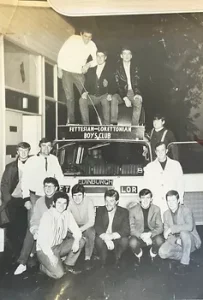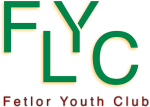 Fettes and Loretto have a long history of collaboration. Be it through rugby or golf or art, generations of Fettesians and Lorettonians have looked beyond the natural competitive spirit between two schools to the core shared values, ambitions and excellence that can come with partnership.
Fettes and Loretto have a long history of collaboration. Be it through rugby or golf or art, generations of Fettesians and Lorettonians have looked beyond the natural competitive spirit between two schools to the core shared values, ambitions and excellence that can come with partnership.
So, in that time of great anguish after the First World War, they came together to consider how best to remember the 371 former pupils who lost their lives. The answer was a youth club that would support the children of the men from the Edinburgh slums who they had fought alongside.
It was with this in mind that the then Headmaster of Loretto, A. R. (Sconnie) Smith, approached his opposite number at Fettes, Dr. A. H. Ashcroft, and proposed the formation of a Boys’ Club in Edinburgh, to be sponsored jointly by the two Schools and their Old Boys. Ashcroft accepted the idea with enthusiasm and, on 2nd January 1924, the Fettesian-Lorettonian Boys’ Club came into
being.
Suitable premises were rented near the High Street, at 24b St Giles Street, and a Club Leader was appointed. Membership started with 70 boys aged from 12 to 18, and later grew to nearly 200. Within the Club rooms there was much activity – boxing, football, gymnastics, indoor games from billiards to ping-pong, handicrafts, library books, informal debates, even the rare luxury of a hot bath. Most popular of all was the lounge where there was not only a fire in the winter months but also a hatch into the kitchen next door, “through which cups of tea and glasses of fizzy drinks (both brewed within) were passed from time to time to the customers without”.Even better, though, were the organised Camps, either at weekends or in the late summer. It was here that the Club really achieved its greatest successes, for it gave boys who had seldom been beyond the dark and dismal streets where they lived the opportunity to enjoy the freshness, and the rigours, of the country. Moreover, when the dates were suitable, boys from Fettes and Loretto would also take part in the Camps on an equal footing.
The Club continued and flourished in St. Giles Street and Riddles’ Court for nearly 30 years, but by the 1950s conditions had changed radically in the Royal Mile. There were no longer ragged little boys running around barefoot, and the inhabitants of the area were being moved into new housing schemes near the outskirts of the City. In 1956 the Club decided to move with them and opened an entirely new chapter in its history. It took over some derelict Army huts in the Pilton district near Crewe Toll, at the north-west corner of the Fettes playing fields. Here it started again from the beginning, in new surroundings; and within a year or two it was as popular as ever. Generous help was given to build a football field behind the huts and the gift of flood-lights meant that the Club was fully re-established.But there was a difference – a social difference. No longer was the Club merely somewhere for poor boys to meet in friendly company before a warm fire with something to eat and a hot cup of tea or cocoa to drink. The friendly company was still there, but the poverty had mercifully gone. The benefits of the Welfare State had seen to that. However, new problems had replaced the old. Gang culture was on the rise, territories became no-go zones and petty crime and vandalism blighted the community.The Local Authority soon realised the benefit of clubs like the FetLor Youth Club (as it is now called) in taking children off the streets and occupying their energies more constructively. It accepted a financial responsibility which, with the need to engage a full-time, fully trained Leader, has increased year by year.
By the 1960s the Army huts were no longer habitable and a specially designed Club House was built at a cost of some £30,000. The Centre itself realised it had to broaden its appeal. In the mid-1980s it opened its doors to girls.10 years ago the Board of FetLor and the Schools decided to further raise the ambition of the Charity and the social impact it could make. Part of this ambition is reflected in the new dedicated youthwork hub completed at the end of 2016. Funding for this came from former pupils and national charitable trusts – as well as the efforts of pupils themselves.
The Board is now in the process of building a team and youthwork programme that will deliver on its commitment to North Edinburgh. The challenges facing the Charity now are as great as at any time in its history. A cocktail of public sector spending cuts and significant increase in demand for our services and support have led us to consider the way in which we work and how we fund it.
Adopting this new approach, based from our new hub, our ambition is to work with over 1,000 young people in North Edinburgh each year. All of them will benefit from the Schools’ partnership that is now approaching its centenary.
